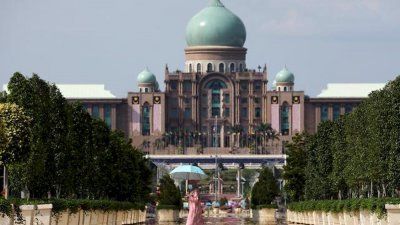我们的政客和政策制定者试图建立马来人主导地位的关键领域就是在教育领域。自独立以来,国家的发展计划始终是国家强调的目标。但是,往往马来年轻一群才是这国家的政策倡议、计划、财力和人力资源投注的对象。
这在政府于中小学教育的支出中所占的国内生产总值(GDP)的百分比显示出来,自1980年来,我国是东亚地区最高的。在2011年,我国的教育拨款占GDP的比重是经合组织国家(OECD)平均水平的两倍,甚至超过或不亚于新加坡,日本和韩国。在2019年,教育拨款占政府总支出602亿令吉的19.2%,其中薪酬就占了教育总支出的80%以上。
然而,我国从这巨额财政支出中获得了什么?
从某种程度上说,对多数人和以乡区为重点的成果来看,这是令人钦佩的,甚至是杰出的。
如1970年,6岁及以上的人口,1/3从未上过学。到了2000年,这一数字下降到10%。在1970年,6岁及以上的人口中,有24%接受过中学教育,只有1%接受过高等教育。在2000年,这些比例分别增加到53%和9%。到2011年,初中和高中的入学率分别上升到87%和78%。今天,我们的小学和中学学生人数超过470万。
可是,过去的成功不能保证未来的光明。尽管取得了这些成就,但马来领导人日益关注为何这没有转化为整个族群和国家的更大人力资本和经济收益。当马来西亚与那一些因教育进步,而普升为发达国家的国家比较时,这明显更令人困惑和充满挫折。
为什么马来西亚没法取得如此成就,实际上已成为许多政策文件和会议的主题。但是,这些答案似乎没有传达到我们的政策制定者和历任教育部长,包括现任者中。
在我国的中小学,至少有6项教育政策失误,阻碍了国民学校的学生发展。
这些是:降低考试标准,尤其是在数学和科学科目上;无法确保英语和其他语言的流利水平;课程的改变,尤其是对宗教教育的重视,导致思维和解决问题能力的不足;招募教师上的种族倾向,导致优质教育人材减少;大学数量的扩张,以牺牲职业教育为代价;重视种族,宗教和阶层成果的心态和决策。
这些失误的苦果,几十年来已经很明显。在国际评估,尤其是国际数学与科学教育成就趋势调查(TIMSS)和国际学生能力评量计划(PISA)方面,马来西亚学生的表现,不仅整体的下滑,在与他国比较上也相形见绌。在2012年的PISA中,我们在65个国家/地区中排名52,而在TIMSS排名上,从1999年至2011年之间,我们的数学和科学成绩上的下降幅度,超过其他国家/地区。
错失良机
更重要的是,这些测试不仅衡量数学和科学能力。其还涵盖了各种认知技能,包括推理和应用能力。其中一项观察结果显示,我们15岁的学童,其能力可能比排名较高的亚洲国家同龄人落后至少三年。这样结果,让人得出结论,认为马来西亚学生在过去30年中变得不聪明或更愚蠢。
从积极的一面来看,最新的PISA和TIMSS结果显示,我国处境略有改善。但是,也有人关注,这可能是我国当局调整了样本的架构,以确保取得更好的表现。如果不改动有关方式,下一次大马的PISA和TIMSS成绩,又会是如何?
这些教育的失误,主要是由在教育领域中占主导地位的民族主义力量所推动。这股力量,在过去40年来将马来社会对教育的关注,转移到两个替罪羊上。
第一,就是通过推动拒绝英语倡导者要求恢复英语做为教学媒介语或至少为主要科目媒介语的运动,以确保马来语在国家教育体系中至高无上的地位。这种不惜一切代价坚持使用民族语言的做法,使马来学童在以英语为主导的知识界、科学和科技领域、就业市场以及工商业领域处于较不利地位。
这也是导致马来社会内部不平等加剧的其中关键因素,因为马来精英把子女送去精英学校,尤其是国家体系外的学校,这些学校在语言政策上更为宽松。
第二个转移的目标,就是极端分子要关闭华小和泰小的动作。没有任何绝对的证据表明,母语学校是造成国民不团结的因素,同样的,也缺乏或没有证据可表明,仅用国语的国小能增强民族团结。
显然的,极端主义者和其政治支持者对母语学校的抨击,成功地转移了马来校学生应优先关注的问题,以及制定政策纠正国民源流学校和宗教学校的缺点。
然而,国民型学校的数万名马来和土著学生,这一事实也表明,要消灭母语学校,在一般民众阶层上已经是失败的,这也可以视为一种正面的发展。
从目前的公众反应,尤其是在社交媒体上的反应来看,马来人和马来西亚人似乎必须等待另一轮政府或领导人的更换后,才可能进行真正的改革,才可能培育出具有可应对21世纪挑战的技能、能力和知识的年轻一代。
《大马教育优劣和错失良机》(Malaysia's Education: Pluses, Minuses and Missed Opportunities)原文:
Key among the sectors which our politicians and policy makers have sought to establish Malay dominance is in the educational field. Since independence, the nation’s development plans have invariably stressed national objectives. But it has been the Malay young population where the country’s policy initiatives and programmes and financial and human resources have been targeted towards.
This is clearly reflected in government expenditure on primary and secondary education as a percentage of GDP which by 1980 was the highest in East Asia. In 2011, the sums spent as a percentage of GDP was twice that of OECD countries average and at par or even higher than that of Singapore, Japan and South Korea. In 2019, educational expenditure comprised 19.2 % of total government expenditure of RM 60.2 billion, with staff emolument amounting to over 80% of education's total.
So what has the country gained from this enormous financial outlay?
The Plus Side
At one level the results of this majority community and rural oriented emphasis have been impressive, even outstanding.
In 1970, one-third of the country’s population aged 6 and over had never attended school; by 2000, the figure dropped to 10 %. In 1970, 24 % of persons aged 6 and over had some secondary education and only 1% had attained tertiary education. In 2000, these proportions had increased to 53% and 9% respectively. By 2011, enrolment figures at the lower secondary and upper secondary level had risen to 87 and 78% respectively. Today we have a primary and secondary schooling population of more than 4.7 million.
Past outcomes are no guarantee of a bright future. Despite these achievements there is growing concern among the Malay leadership as to why this has not translated into greater human capital and economic gains for the community and country as a whole. This apparent puzzle is more confounding when Malaysia is compared with countries where educational advances have become their foundation stone for progress into the ranks of developed nations.
Why this has not happened has in fact been the subject of numerous policy papers and conferences. But the answers appear to elude our policy makers and successive Ministers of Education, including the recent ones.
The Minus Side
There are at least six missteps in educational policies at the primary and secondary levels which have handicapped our Sekolah Kebangsaan school kids especially.
These are
the lowering of examination standards especially in mathematics and science
the failure to ensure English and other language proficiency
curricula changes especially the emphasis on religious education that have resulted in deficient thinking and problem solving skills
racially biased teacher recruitment which has reduced the pool of quality educators
proliferation of universities at the expense of vocational education
mindsets and policy decisions that place a premium on racial, religious and class-based outcomes
The consequences of these missteps have been clearly evident for several decades. International assessments - notably Trends in International Mathematics and Science Study (TIMSS) and Programme for International Student Assessment (PISA) - show that Malaysian student performance has not only been declining in absolute terms. In PISA 2012 we ranked 52 out of 65 countries while, between TIMSS 1999 and 2011, our mathematics and science scores dropped more than in any other country.
It is important to note that these tests measure more than ability in maths and science. They also cover a variety of cognitive skills including reasoning and application. One finding is that our school kids at 15 years of age may be three years or more behind their peer groups from the higher ranked Asian countries.
Observers viewing the results may be forgiven for concluding that Malaysian students have become less smart - or more stupid - during the last 30 years.
On the plus side, the latest PISA and TIMSS results show a slight improvement. However there are concerns that the Malaysian sampling frame may have been massaged by our authorities to ensure a more favourable national outcome.
What will the next round of PISA and TIMSS reveal if untampered with?
Compounding the Missteps: Missed Opportunities
These educational missteps have been primarily driven by ethno-nationallist forces that dominate the national discourse on education. These forces have for forty years diverted the Malay public concern on education to two convenient scapegoats.
The first has been the campaign to ensure Malay language supremacy in the national schooling system by turning back the pleas of advocates of English language for its return as a medium of instruction or minimally, the reversion to its use in key subjects. This insistence on the national language at whatever cost has placed Malay school children at a great disadvantage in the English language dominated world of knowledge and science and technology, the employment market as well as in business and industry. It is also a key factor in the growing inequality within Malay society as the Malay elite send their children to superior schools, especially those outside the national system where the language policy is more liberal.
The second is the battle by extremists to close down Chinese and Tamil language schools. There is absolutely no evidence that mother tongue schools are a factor in causing disunity just as there is little or no evidence that national schools teaching solely in Bahasa Malaysia foster a greater sense of national unity. The extremist critics of vernacular language schools and their political supporters must be ‘congratulated’ for successfully deflecting attention away from the priority problems of Malay school kids and the corrective policies necessary to overcome the shortcomings in the sekolah kebangsaan and religious schools streams. The fact that hundreds of thousands of Malay and Bumiputera students are now enrolled in the sekolah rendah jenis kebangsaan schools (SRJKs) shows that the battle to down vernacular schools at the grassroots levels has failed and can be considered a positive development.
The Future
For now judging from public response, especially in the social media, it appears that the Malay and Malaysian community will have to wait for another change in government or new set of leaders before real reform and the promise of educating a younger generation equipped with knowledge, skills and competencies to meet the challenge of the 21st century can be fulfilled.
要看最快最熱資訊,請來Follow我們 《東方日報》WhatsApp Channel.
.jpg/a8d03777d220b4bbbdd5dafc70de8aad.jpg)














.jpg/374eca2740037166a44df8d8751a2160.jpg)


